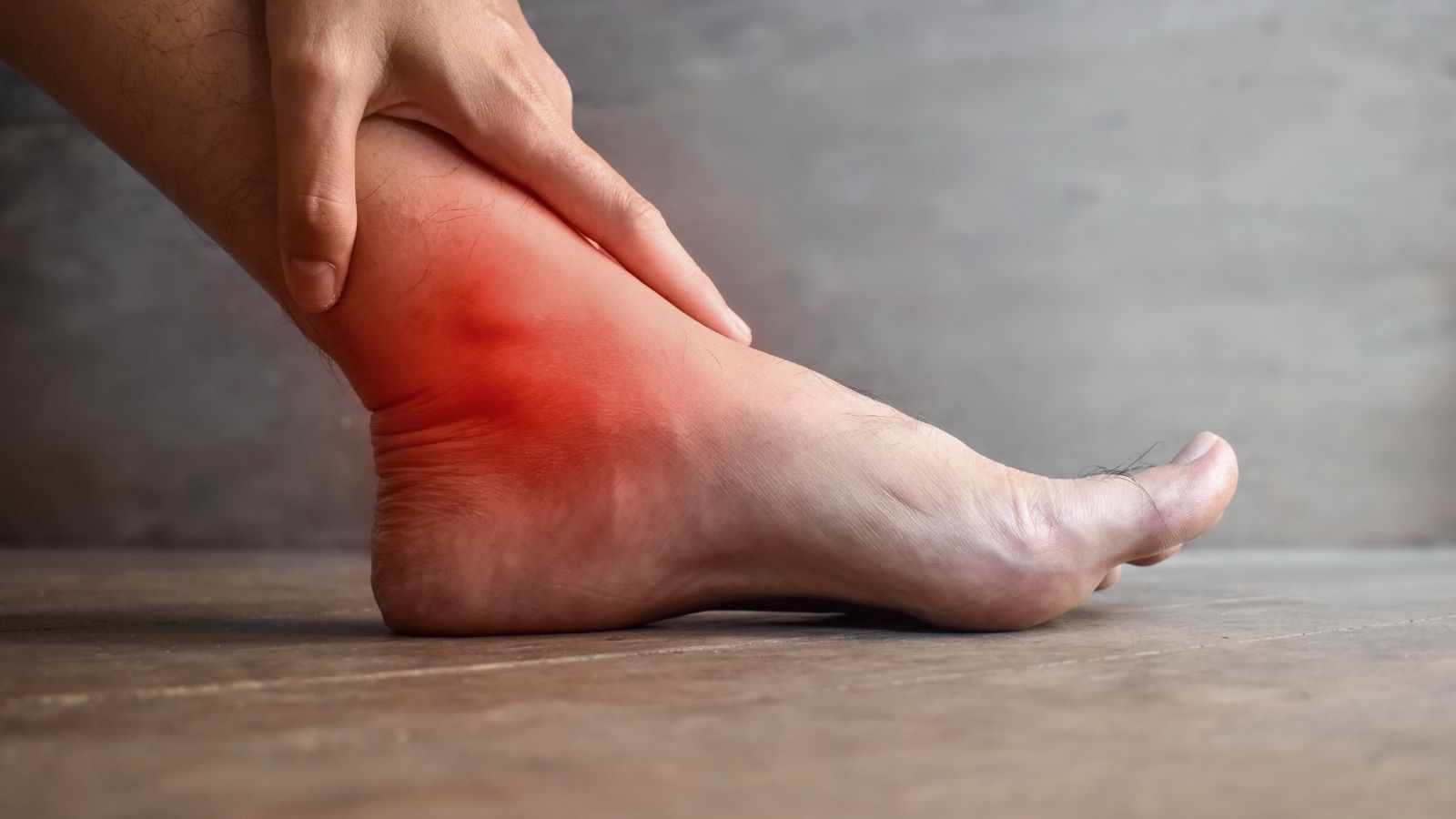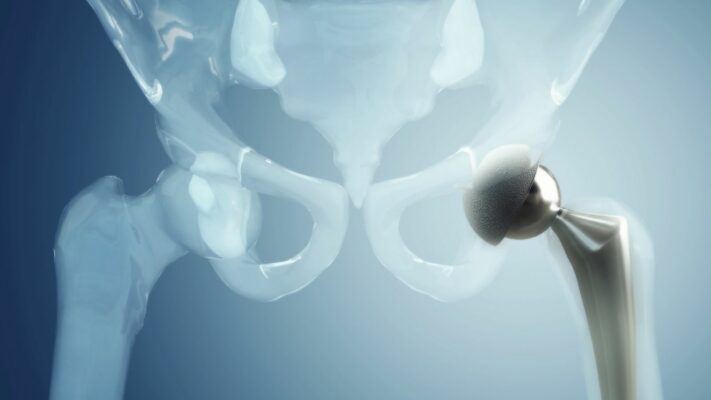Prof. Dr. Murat Demirel, one of the best orthopedic doctors performing ankle arthroscopy in Ankara, stands out with modern surgical techniques in the diagnosis and treatment of problems causing pain, limited movement, or structural deformities in the ankle. Ankle arthroscopy is a minimally invasive procedure in which problems inside the joint are treated with the help of a camera and special surgical instruments through small incisions. This allows patients to experience less pain, shorter recovery time, and a faster return to daily life. Prof. Dr. Demirel applies personalized surgical plans for his patients in hospitals in Ankara that perform ankle arthroscopy, equipped with advanced medical technology and high hygiene standards.
By making a detailed assessment before the surgery, Prof. Dr. Demirel clarifies the cause of the problem in the joint and closely monitors his patients after the operation. With the doctor’s advice after ankle arthroscopy, the recovery process is ensured to be safe, fast, and permanent. In addition, he provides transparent and up-to-date information about ankle arthroscopy prices in Ankara, helping patients make informed decisions. You can also make an appointment right away to protect your ankle health, reduce your pain, and increase your mobility.
| Name of Surgery | Ankle Arthroscopy |
| Application Area | Ankle joint |
| Indications | Chronic ankle pain, ligament injuries, synovitis, loose bodies, osteochondral lesions, impingement syndrome |
| Method of Application | Arthroscopic (closed) surgical method; performed using camera-assisted devices through small incisions |
| Type of Anesthesia | General or spinal anesthesia |
| Operation Duration | Usually 30-90 minutes |
| Hospital Stay | Mostly discharged the same day; in some cases, 1-night stay may be required |
| Recovery Period | On average 2-6 weeks; return to activity varies depending on the severity of the lesion |
| Need for Physical Therapy | Generally recommended; to maintain joint range of motion and increase muscle strength |
| Possible Complications | Infection, nerve injury, vascular damage, swelling, joint stiffness, persistent pain |
| Success Rate | High; positive results are obtained when performed with the right indication |
| Need for Follow-up | Regular follow-up appointments and physical therapy during the recovery process are recommended |


Prof. Dr. Murat Demirel
Orthopedics and Traumatology Specialist
Orthopedics Specialist Prof. Dr. Murat Demirel was born in Ankara in 1974. He completed his primary education at Ankara Kavaklıdere Primary School and his secondary and high school education at Ankara Atatürk Anatolian High School. Dr. Demirel graduated from Ankara University Faculty of Medicine in 1998 and completed his residency in Orthopedics and Traumatology at Ankara Numune Training and Research Hospital, 1st Orthopedics and Traumatology Clinic, in 2004.
PhD
Ankara University Institute of Health Sciences
Specialization
Ankara Numune Training and Research Hospital, 1st Orthopedics Clinic
Medical School
Ankara University Faculty of Medicine
Yazı İçeriği
What is Ankle Arthroscopy?
Ankle arthroscopy is the visualization and treatment of the inside of the ankle joint using special instruments with a camera inserted through a few small incisions without opening the joint.
To better understand this, let’s use an analogy. In the past, to find a problem in a room, one had to demolish the entire wall, but now you can insert a tiny camera through the keyhole and see the entire room, even fixing the problem inside with robotic arms. This is exactly what arthroscopy is. “Arthro” means joint, and “scopy” means to look; literally meaning “to look inside the joint.”
The basic working principles of this method are very clear. The success of the surgery depends on applying these steps harmoniously.
Minimal Invasion: Instead of the large 10-15 cm incision required in traditional open surgery, only a few small incisions (portals) of half a centimeter are used. Thus, damage to the surrounding healthy muscles, vessels, and nerves is minimized.
Detailed Visualization: Through one of these small incisions, an arthroscope—a thin camera the thickness of a pen—is inserted into the joint. Thanks to its fiberoptic light source, this camera illuminates the inside of the joint and projects enlarged images onto a high-resolution screen in the operating room. This way, even the smallest cartilage tears, tissue fragments, or inflamed areas that cannot be seen with the naked eye can be detected.
Creating a Working Space with Fluid: During the surgery, sterile fluid is continuously pumped into the joint. This fluid has two purposes. First, it slightly inflates the normally narrow joint like a balloon, creating a comfortable working area for the surgeon. Second, it continuously washes away small bleeding and tissue debris during the procedure, ensuring a clear view.
Delicate Surgical Instruments: Special instruments designed to solve the problem are inserted through the other small incisions. These include miniature scissors, graspers, trimmers, and motorized shavers used to cut, hold, trim, or stitch tissues. While watching the live image on the screen, the surgeon performs the necessary repair with these delicate instruments.
In Which Cases is Ankle Arthroscopy Needed?
Ankle arthroscopy is like a “Swiss army knife,” a versatile method used both in the diagnosis and treatment of various problems. It is especially considered when other diagnostic methods (like X-ray or MRI) cannot clearly show the source of the problem, or when conservative treatments (medications, rest, physiotherapy) are not effective.
If you experience one of the following conditions, ankle arthroscopy may be a solution for you:
Ankle Impingement Syndromes: Common among athletes and dancers. If you feel sharp pain when bending the ankle in a certain direction (such as walking uphill or standing on tiptoe), this may be caused by soft tissue or small bone spurs pinching inside the joint. Arthroscopy can clean out this excess tissue causing impingement and relieve the pain.
Osteochondral Lesions (Cartilage and Bone Injuries): Usually after severe sprains or trauma, a crater-like injury may occur on the cartilage and underlying bone of the talus bone. This causes deep pain, swelling, and a “catching” sensation in the joint. Arthroscopy can clean the damaged area, and by creating small holes in the bone (microfracture technique), stimulate the body’s natural healing to form new cartilage tissue.
Loose Bodies: Small pieces of cartilage or bone may break off and float inside the joint after trauma or arthritis. Like a small stone stuck between machine gears, these can cause sharp pain, locking, and catching in the joint. Arthroscopy can easily locate and remove these “loose bodies.”
Synovitis (Inflammation of the Joint Lining): Due to rheumatic diseases, repetitive strain, or trauma, the synovial membrane covering the joint may become inflamed and thickened. This causes constant pain, swelling, and warmth. Arthroscopy can clean these inflamed tissues (synovectomy) and relieve symptoms.
Chronic Ankle Instability (Frequent Sprains): People with previous ankle sprains may have poorly healed ligaments, causing instability, giving way, and frequent sprains on uneven ground. Arthroscopy can be used to both assess the ligaments and repair or tighten them with minimally invasive techniques.
Arthrofibrosis (Scar Tissue Formation): After previous surgery or serious trauma, excessive stiff scar tissue may form inside the joint, causing limited mobility and pain. Arthroscopy can cut and remove these adhesions to restore movement.
Some Ankle Fractures: In fractures involving the joint surface, arthroscopy can be used alongside open fixation with screws to ensure the joint surface is perfectly aligned, reducing future arthritis risk.
Ankle Arthritis: In early stages, arthroscopy can clean worn cartilage and bone spurs (debridement) to relieve pain. In advanced stages, joint fusion (arthrodesis) can also be performed arthroscopically.
What Awaits Me Before Ankle Arthroscopy?
The success of the surgery depends not only on what happens in the operating room but also on proper preparation before it. Think of this process like preparing for a big journey. Each step ensures safety and smooth progress.
First Consultation and Evaluation:
It all begins with a detailed consultation. We listen to your complaints, when and how they started, what makes them better or worse, your medical history, and expectations. Then a thorough physical exam of your ankle’s mobility, sensitive points, and stability is performed. Following this, imaging methods are usually requested to clarify the cause:
- X-ray
- Magnetic Resonance Imaging (MRI)
- Computed Tomography (CT)
Preoperative Instructions and Lifestyle Changes:
Once the diagnosis is confirmed and surgery is planned, you’ll be given important instructions to prepare your body for the procedure. Following these rules lowers anesthesia risks and speeds up recovery.
Medications: Blood thinners (like aspirin, warfarin), some painkillers (such as anti-rheumatics), vitamins, and herbal supplements may increase bleeding risk. It is vital to inform us about ALL medications and supplements you use, and to follow our instructions on which ones to stop and when.
Smoking and Alcohol: Nicotine in cigarettes seriously disrupts blood flow to tissues, slowing healing, increasing infection risk, and delaying bone recovery. Stopping smoking at least 2-3 weeks before surgery significantly improves recovery. Alcohol should also be avoided before surgery as it increases bleeding risk.
Nutrition and Fasting: Having an empty stomach during anesthesia prevents nausea, vomiting, and most importantly aspiration (stomach contents entering the lungs). Therefore, you should not eat or drink anything, including water, for 6-8 hours before surgery as instructed.
General Health Check: Depending on your age and health, preoperative tests such as blood tests, chest X-ray, and ECG are performed. If needed, you may be referred to a cardiologist or internist for anesthesia clearance.
Logistical and Mental Preparation:
Some arrangements will make life easier after surgery. As you cannot drive for a while, arrange for someone to take you home from the hospital. At home, prepare a comfortable place where you can rest and keep your foot elevated in the first days. Don’t hesitate to ask us anything that comes to mind; the more informed you are, the more secure and comfortable you will feel.
Contact us for detailed information and an appointment!
How is Ankle Arthroscopy Performed?
One of the most common questions is what happens on the day of the surgery. Let’s explain this step by step to remove uncertainties.
Arrival and Preparation: On the morning of surgery, you arrive at the hospital and settle in your room. An IV line is opened, you are given a surgical gown, and the anesthesiologist visits you to explain anesthesia and make final checks.
Anesthesia: In the operating room, the most suitable anesthesia is administered, usually in one of two ways:
General Anesthesia: You are fully asleep and feel nothing during surgery.
Regional Anesthesia (Spinal/Epidural): With an injection in the lower back, the lower half of your body is numbed. You may stay awake or be given a mild sedative.
Position and Sterilization: Once anesthesia takes effect, your ankle is positioned appropriately. A tourniquet is placed on the thigh to control bleeding. The entire leg is then disinfected with antiseptic solution and covered with sterile drapes.
Surgical Procedure: The surgeon makes 2-3 small incisions (portals) at strategic points, avoiding nerves and vessels. Through one portal, the camera (arthroscope) is inserted and the joint is inflated with sterile fluid. The surgeon inspects the joint on the monitor and uses miniature instruments through other portals to perform treatment. Damaged tissue is cleaned, bone spurs trimmed, loose bodies removed, or torn tissue repaired. The procedure usually lasts 30 to 90 minutes depending on complexity.
Closure: After treatment, instruments are removed, fluid drained, and the small incisions are closed with stitches or special strips. Sterile dressing is applied, and the ankle is supported with a bandage and usually a splint or walking boot.
Recovery Room: After surgery, you are monitored until you safely wake from anesthesia, then returned to your room once stable.
What is the Recovery Period After Ankle Arthroscopy?
The most crucial phase for lasting success is recovery and rehabilitation. This process requires patience, adherence to medical instructions, and teamwork.
First Few Days: Rest and Swelling Control
Elevation: Keep the operated leg elevated above heart level for the first 2-3 days with pillow support to reduce swelling and pain.
Ice Application: Apply ice packs wrapped in a towel 4-5 times a day for 15-20 minutes to reduce pain and swelling.
Pain Control: Take prescribed painkillers regularly before pain worsens.
Wound Care: Keep the dressing dry; it will be changed as instructed.
Movement: Unless told otherwise, you may use crutches without bearing weight (or as allowed) for short movements.
After the First Weeks: Physiotherapy Begins
Once wounds heal and swelling decreases, physiotherapy starts. A customized program is created with a physiotherapist, focusing on:
- Restoring joint range of motion
- Strengthening surrounding muscles
- Improving balance and coordination
- Returning to normal, pain-free walking
Return to Activities and Sports
Office work may resume in 1-2 weeks. Driving is usually possible after 3-6 weeks when ankle control returns and painkillers are no longer needed. Light sports like walking or swimming can start within weeks, but high-impact sports may take 3-6 months, depending on the surgery. The final decision should be made by your doctor.
What are the Advantages of Ankle Arthroscopy?
Compared to open surgery, ankle arthroscopy offers:
Less Pain: Minimal tissue trauma results in less postoperative pain.
Faster Recovery: Less tissue damage means quicker healing and earlier return to daily activities.
Lower Infection Risk: Only a few small incisions reduce infection risk.
Better Cosmetic Results: Small scars instead of large incisions.
Shorter Hospital Stay: Most cases are outpatient; patients go home the same day.
Superior Diagnosis: Enlarged camera view reveals even tiny problems undetectable by MRI and allows simultaneous treatment.
Are There Risks of Ankle Arthroscopy?
Like all surgeries, ankle arthroscopy has potential risks, though rare:
Nerve Injury: Nearby nerves may be irritated, causing temporary numbness or tingling, which usually resolves.
Infection: Though rare, infection at incisions or in the joint may occur.
Deep Vein Thrombosis: Prevented by early movement and sometimes blood thinners.
Joint Stiffness: Can occur if physiotherapy is neglected.
Persistent Pain: Rarely, symptoms may not resolve.
Anesthesia Risks: Though modern anesthesia is safe, risks like allergies or breathing issues exist.
Who is Not Suitable for Ankle Arthroscopy?
Not every patient or condition is suitable:
Active Infection: Surgery must be postponed.
Severe End-Stage Arthritis: Arthroscopy is not effective when joint space is completely closed; joint fusion or replacement may be needed.
Severe Vascular Disease: Poor circulation may prevent healing.
Uncontrolled Systemic Diseases: Uncontrolled diabetes or severe heart/lung disease may prevent safe surgery.
What is the Difference Between Ankle Arthroscopy and Open Surgery?
The two are not rivals but tools for different problems. Arthroscopy is precise and minimally invasive, like fixing an electrical socket without tearing down the wall. Open surgery is for major issues, like rebuilding a supporting column of a building.
Contact us for detailed information and an appointment!
Frequently Asked Questions
What is ankle arthroscopy?
Ankle arthroscopy is a minimally invasive (closed) surgical procedure performed through small incisions with a camera and surgical instruments to examine and treat the inside of the ankle joint. The camera provides a detailed view, and damaged tissues can be treated.
In which conditions is ankle arthroscopy used?
It is used in the diagnosis and treatment of recurrent ankle sprains, cartilage injuries, loose bodies, joint infections, ligament injuries, impingement syndromes, and some ankle arthritis cases.
What are the advantages of ankle arthroscopy?
Compared to open surgery, it uses smaller incisions, recovery is faster, infection and bleeding risks are lower, patients return to daily life quicker, and postoperative pain is reduced.
How is the surgery performed and how long does it take?
It is usually performed under general or regional anesthesia. Several small incisions are made in the ankle, and a camera and fine instruments are inserted. Damaged tissue is cleaned, loose bodies removed, or cartilage repaired. Surgery usually lasts 30-90 minutes.
What is the recovery process after surgery?
Most patients are discharged the same day. Rest, elevation, and ice are recommended in the first days. Crutches may be used temporarily. Physiotherapy begins after stitches are removed, and full recovery usually takes a few weeks to 2-3 months.
Are there risks in ankle arthroscopy?
As with any surgery, risks such as infection, bleeding, nerve or vessel injury, and joint stiffness may occur, though rarely. With proper technique and an experienced surgeon, risks are minimal.
Who is not suitable for it?
Patients with advanced joint arthritis, severely deformed bone structure, or serious vascular/nerve issues may not be suitable. An orthopedic specialist should decide on treatment.
When can patients return to sports and work life?
Light activities and desk jobs usually within 2-3 weeks. Active sports and heavy physical activities require 6-8 weeks or more, depending on recovery speed.
Is there pain after surgery?
Mild to moderate pain may occur in the first few days but is controlled with painkillers. Pain is much less compared to open surgery.
Can complaints recur after surgery?
With proper indications and technique, recurrence is rare. However, underlying conditions or advanced arthritis may cause ongoing complaints.




